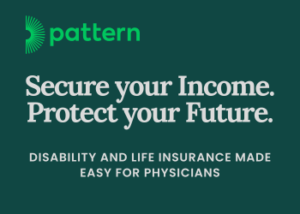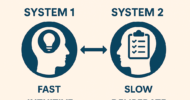
Remember the figure-ground drawing from psychology 101 that demonstrates (ahem) “how edge assignment designates perceptual groupings?” I always just thought it was cool how you could look at the picture of a vase and blink and — whoa, Nellie — now you saw two people face-to-face.
I’m concerned that the frantic drive toward evidence-based medicine as a strategy for quality improvement and cost reduction sets clinicians and patients up for a figure-ground conflict about our shared picture of health care.
Clinicians, whose practice patterns are increasingly shaped by quality measures and performance incentives, hew to evidence-based guidelines as the basis for their treatment recommendations and plans. Sometimes alternatives are discussed with patients and caregivers. Sometimes risks and benefits of a treatment are considered in those discussions. But the treatment favored by the guideline is generally the recommendation, and while questions may be invited from us, our resistance is not expected.
For us, however, the evidence constitutes only one data point in our decision to proceed with a treatment. The questions we find easiest to ask are about the treatment itself, of course: Will it hurt? What are the side effects? Will I be able to drive? Work? What are the chances it will be effective — 50 percent? 10 percent?
But those concerns quickly broaden: What is the price — financially and in terms of inconvenience? How long will I have to pay it? How much time will it take to take the medication or have the treatment administered? How long will the treatment continue? What will be required of others to make this treatment work for me, now and over the long term? How will this treatment affect treatments of my other health conditions? Will I gain weight? Can I still exercise? How will I feel? What happens if I don’t do this or I can’t continue with the treatment?
The questions we have for our clinicians represent only a subset of our concerns in taking on a new treatment. Do I have the time to take this on when my job is insecure? Who do I know that can drive me or help me when I am ill from the treatment? Will I need to hire help? How can I summon the energy to organize even a modest change in my routine when I am so depressed and overwhelmed?
As Montori, Brito and Murad note in a recent essay in JAMA about incorporating patient preferences into evidence-based medicine, “Individuals form their preferences when they have to make a decision, in a context replete with emotional and social influences.”
Our many questions are rarely part of the discussion we have with our clinician about treatment options, regardless of how complex the decision is. In part, this is due to a lack of our clinicians’ time and interest , and in part it is due to our lack of experience and imagination. It is difficult to envision all the different dimensions of one’s daily life that can be changed by a treatment when acquiescence is clearly expected (in the next few minutes) from the clinician sitting across from you. Rather, our questions emerge over time and the answers provide the clues for why we sometimes abandon the plan and fail to reap the benefit that might be gained from closer adherence.
We look at that figure-ground picture above and see the two people. It could be us and our clinician, our caregiver, or it could generally represent the idea that our health care consists of a deeply social and psychological set of interactions and circumstances. With just as much certainty, our clinicians look at the same picture and see as background what we see as figure. They view the crucible of evidence as the figure: how to follow it, how to make it matter, how to best deploy it for the benefit of their patients.
This conflict in perspectives stands to increase in the coming years. For clinicians, the pressure to increase the number of quality measures and their use ratchets higher all the time, while for us, advances in technology mean that the burden of care is now ours and our families’. We often now remain at home even while very ill, self-administering our own treatments or being helped by a family caregiver.
I have drawn a sharp divide between us and our clinicians, which undoubtedly exaggerates the commitment of some clinicians to guidelines-based care. It doesn’t, however, misrepresent the fundamental difference in the way both sides view health care. The success of our mutual enterprise — our individual health and well-being — requires that the polarity of those views be reduced. We must better understand the role evidence can play in ensuring we get the most out of the care that is available to us. And our clinicians must adjust their recommendations to accommodate for the messy, complicated context in which evidence competes for our attention with our kids, parents, jobs, community obligations, friends, pets and comfort.
What will be the impetus for this change?
Jessie Gruman is the founder and president, Center for Advancing Health. She is the author of Aftershock: What to Do When You or Someone you Love is Diagnosed with a Devastating Diagnosis. She blogs regularly on the Prepared Patient blog.

























![Why true listening is crucial for future health care professionals [PODCAST]](https://kevinmd.com/wp-content/uploads/Design-3-190x100.jpg)
![Surviving kidney disease and reforming patient care [PODCAST]](https://kevinmd.com/wp-content/uploads/Design-2-190x100.jpg)

